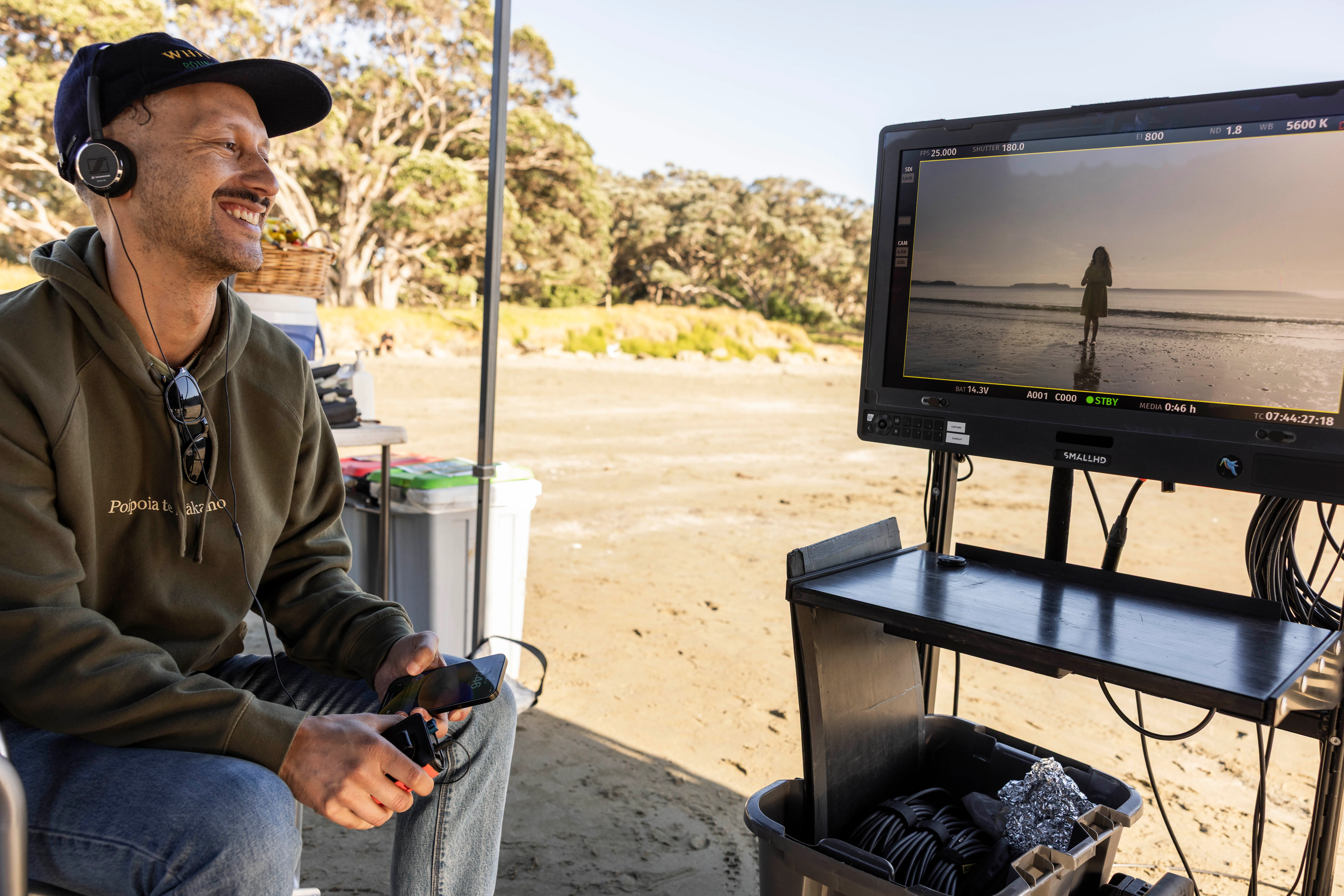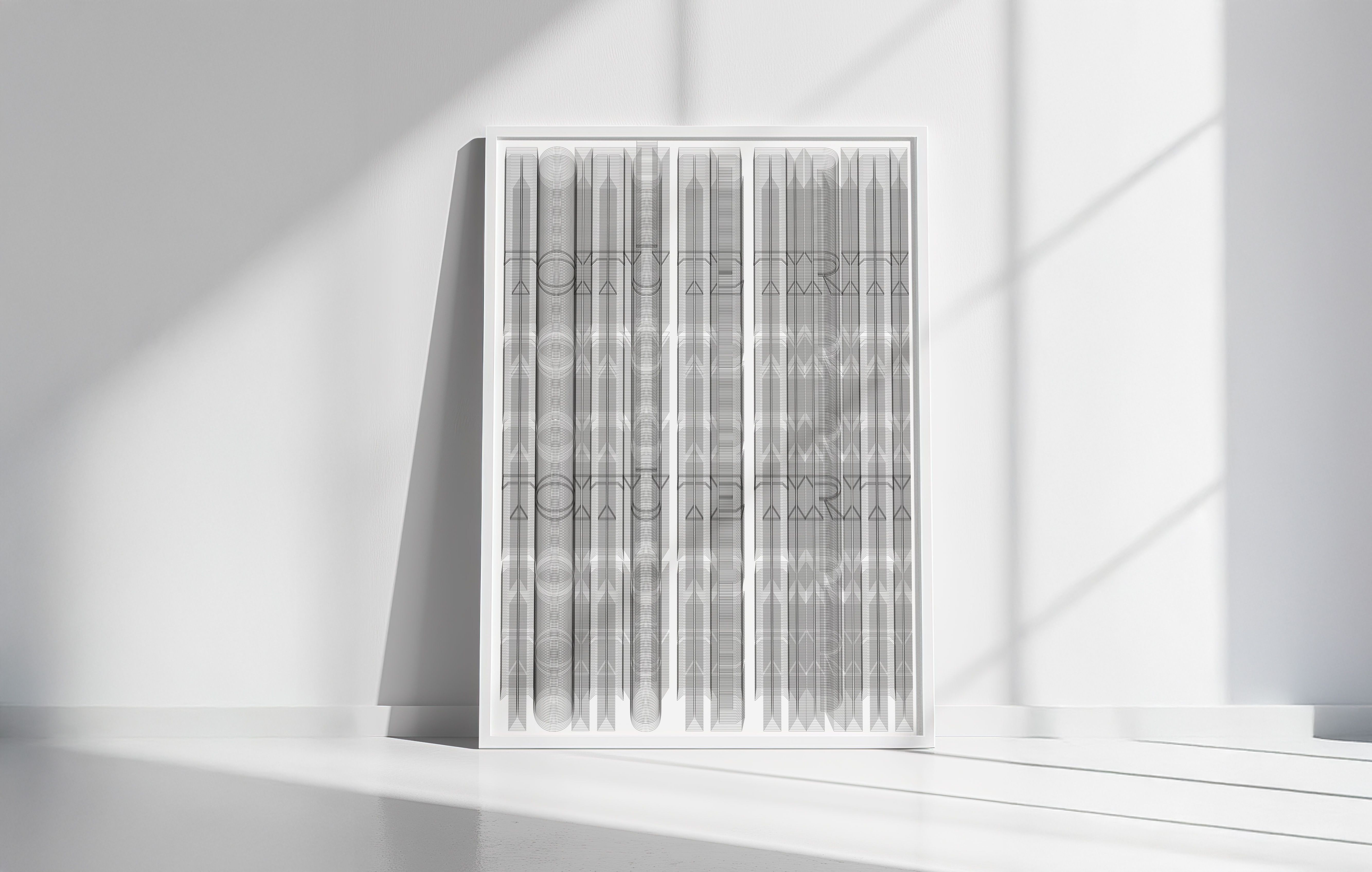Tahuna Te Ahi: Kaan Hiini
Award-winning designer Kaan Hiini talks balancing tradition and innovation and the role of ngā toi Māori in the future in our new 'Tahuna Te Ahi (Setting the World Alight)' series produced in partnership with Te Manawa.

Kaan Hiini is an award-winning designer dedicated to crafting bold, innovative work that inspires positive social change, and decolonises western design process. He is the design director of Curative and recently the winner of the Aotearoa Typography Poster Award 2024.
BALANCING TRADITION AND INNOVATION IN NGĀ TOI MĀORI
I love the challenge of understanding how our cultural traditions can translate into contemporary expressions. A lot of my work has been based around exploring this. I feel like it’s an exciting and generative space to play within and I believe it holds great opportunity for us to continue to develop our unique perspectives and expressions in the world. These explorations are such a taonga, not just for our people but for all who seek to engage with different world views. It helps develop empathy for different communities and an openness for different ways of thinking.
When I was younger the dominant picture of Māori culture and toi Māori was one relegated to museums and encyclopaedia. This wasn’t a true reflection of course. We had many artists doing great work at the time, notably Robyn Kahukiwa whose illustrations in The Kuia and Spider I still remember fondly. But the general narrative around toi Māori was so focused on taonga tūturu, relegated to history and barred from contemporary spaces. It’s great that this is changing now, through the celebration of contemporary Māori artists in major shows and publications like Toi Tū Toi Ora and a new generation of artists, architects, performers and designers who have a strong vision of what Toi Māori can be.
Historically Māori have always shown their interest in learning and embracing new technology, and so innovation and experimentation makes complete sense for ringatoi. When we look at whakairo, the complexity of it increased incredibly as Māori embraced metal tools. Our ancestors were excited with all the ways this technology empowered them, and their work benefited from it. The same should be true of ringatoi today. Embracing new ways of making.
I think the balance between the past and the future will be most present in process.
I believe we shouldn’t try to restrict our exploration. Toi Māori doesn’t need to look a certain way or match the forms of taonga tūturu - the important thing is the thinking and how we build upon those forms. For me the key thing is to ensure I understand the history before I try to subvert or experiment with them. Ka mua, ka muri. To move forward confidently it’s important to have a firm grounding and understanding of how and why forms have been used in the past. Understanding pūrākau structures, metaphor and poetry, graphic shapes and patterns, mediums - all should inform our work and allow us to experiment in new and exciting ways. It’s a way of respecting the work of those who have gone before.
I believe collaboration and kōrero is also important. People may have different opinions about use, and I don’t profess to know everything, and I know I don’t get everything right, but I do try to talk to people about my thinking, testing it as I apply it to work. This provides some safety and consideration around the work. It also pushes it forward to be better. Design is a process of testing and refining, so input is really valuable.
And finally the idea of any piece having he ngākau Māori. The ‘think’ behind it feels of Māori community, it reflects Māori experience and ways of being, it thinks holistically about what it’s doing, how it connects, how it's innovating in ways that protect and celebrate tuakiri Māori. It’s not innovating without purpose, it’s trying to say or do something meaningful. As long as you have a clear story attached to your work and can tell it in a way that welcomes in people, I believe that provides balance.

THE ROLE OF NGĀ TOI MĀORI IN THE FUTURE
I believe there’s so much potential in toi Māori - a special spark that you can’t find anywhere else in the world. It comes down to a way of understanding the world and our responsibility to each other. Te reo Māori is such a poetic and metaphoric language. I think that translates to all forms of toi Māori. And what I’ve learnt through a lot of my career is how impactful that is for communities. Telling a story that speaks to a current issue often helps people emotionally connect with it and therefore understand it.
So I guess I believe it can teach us how to be better. We know all creativity supports our wellbeing. It reinvigorates and inspires us. It refills our cup. It also helps our sense of ourselves. Whether as a reflection on your own experiences or helping you see your place in the larger systems, whānau, community, environment. So toi Māori, as something so specifically of this place in the world, can help us understand what makes us who we are, and dream of what we can be - of abundance and connection and hope. It can inspire us to create a world for our ancestors to thrive in.
About Te Manawa
Te Manawa is an initiative ‘for Māori artists, by Māori artists’, grounded in whakapapa, organised by tikanga, and shaped by collective voice.
This is a movement to amplify, activate, and advocate for Māori arts and artists in Tāmaki Makaurau - guided by the pulse of Te Manawa, Pumanawa, Whatumanawa. These three life forces are essential, shaping how we uphold Rangatiratanga, Manaakitanga, and Auahatanga in everything we do.